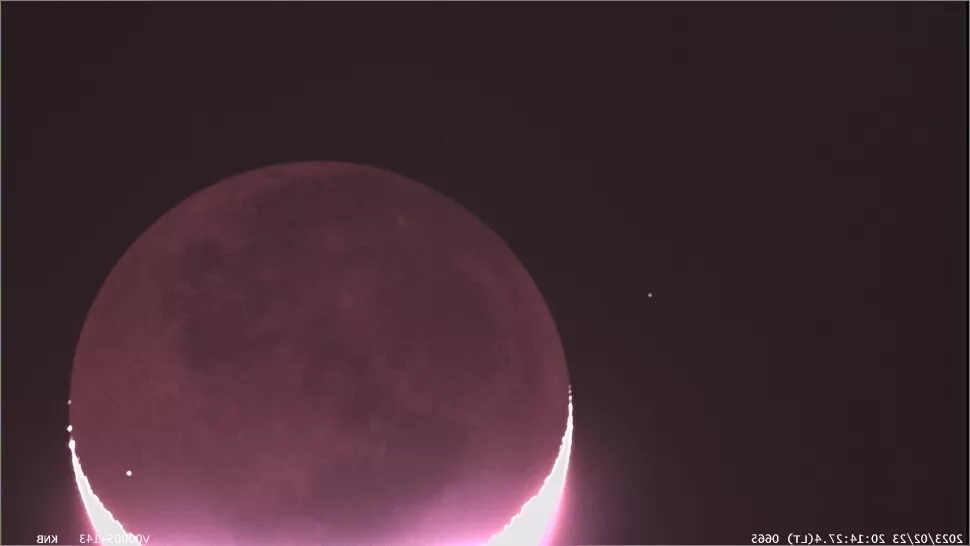A meteorite collides with the moon and is observed by a Japanese astronomer. (Video)
The space rock created a brief but brilliant flash that was captured from Earth.
On February 23, at 20:14:30.8 Japan Standard Time (equivalent to 7:14 a.m. EST or 1114 GMT), a meteorite hit the moon, resulting in a brief flash on its nightside, which was captured by Daichi Fujii, the curator of the Hiratsuka City Museum. Fujii utilized cameras specifically positioned to track the moon to record the occurrence. According to Fujii, the meteorite seemed to have struck near Ideler L crater, a little northwest of Pitiscus crater.

At an average speed of 30,000 mph (48,280 kph) or 8.3 miles per second (13.4 km/s), meteors generate intense heat upon impact, resulting in craters and a brilliant flash of visible light. These impacts on the moon, if they occur on the lunar nighttime facing Earth and are large enough, can be observed from Earth, as shown in the image captured above. The new crater formed by the meteorite is expected to have a diameter of roughly 12 meters (39 feet) and may be photographed in the future by either NASA’s Lunar Reconnaissance Orbiter or India’s Chandrayaan 2 lunar probe, according to Fujii.
私の観測史上最大の月面衝突閃光を捉えることができました!2023年2月23日20時14分30.8秒に出現した月面衝突閃光を、平塚の自宅から撮影した様子です(実際の速度で再生)。なんと1秒以上も光り続ける巨大閃光でした。月は大気がないため流星や火球は見られず、クレーターができる瞬間に光ります。 pic.twitter.com/Bi2JhQa9Q0
— 藤井大地 (@dfuji1) February 24, 2023
While Earth is bombarded by meteors on a daily basis, the majority of them disintegrate upon entering the atmosphere. On the other hand, the moon’s exosphere is very thin, which means that meteors that would not make it through Earth’s atmosphere frequently hit the moon’s surface, giving it its distinct appearance covered in craters. These meteoroids continually strike the lunar surface, sometimes pulverizing it into fine dust, known as lunar soil.
In addition to its aesthetic value, the study of these lunar impacts has scientific significance. By studying the rate of impacts on the moon’s surface, scientists can gain insight into the frequency and intensity of these events, which is particularly relevant as countries like the United States prepare to send humans back to the moon.
Do not forget to share your opinion with us to provide you with the best posts !




0 Comments